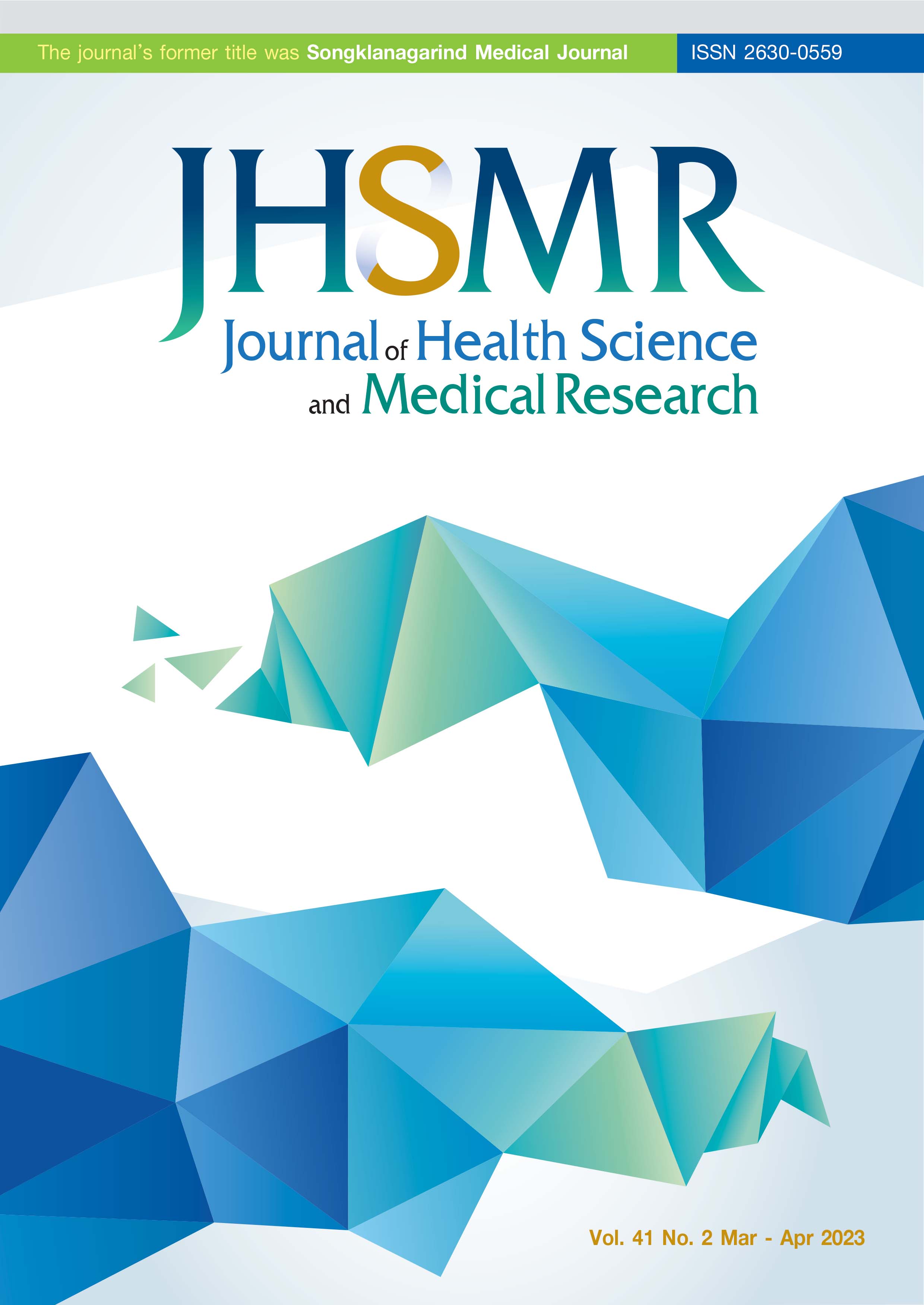Measured and Predicted Maximal Oxygen Consumption (VO2 max) in Healthy Young Adults: A Cross-Sectional Study
DOI:
https://doi.org/10.31584/jhsmr.2022896Keywords:
cardiorespiratory fitness, direct method, gas analyzer, maximal oxygen consumption, Queen College’s Step TestAbstract
Objective: Maximal oxygen consumption (VO2 max) can be estimated using maximal or sub-maximal tests, by direct or indirect methods.The Queen’s College Step Test (QCT) is used very frequently to estimate VO2 max due to its simple, safe, quick and feasible approach. Originally the QCT was developed for the white race population, which is different from the Indian population in terms of ethnicity. So the present study was conducted to validate the applicability of the QCT to indirectly estimate VO2 max in Indian adults.
Material and Methods: A total of 419 apparently healthy students (male and female) were recruited for the study by the RUHS College of Medical Sciences (RUHS-CMS), Jaipur from January 2019 to March 2020 by random number table generator sampling. Direct estimation of VO2 max was performed by sub-maximal exercise testing on a treadmill using a gas analyzer, while VO2 max was indirectly predicted by the standard QCT protocol. The collected data were entered into Microsoft Excel and analyzed using unpaired student t-test, analysis of variance (ANOVA), and regression analysis.
Results: The average directly measured VO2 max (ml/kg/min) in males was 45.30±7.35, and for women was 35.71±5.29, and predicted by the QCT was 49.01 for males and 38.83±5.30 for females. The difference between the measured and predicted mean VO2 max (PVO2 max) values was statistically significant (p-value<0.05).
Conclusion: In this study, actual VO2 max was lower than the predicted VO2 max from the QCT. The results of this study suggest that a new equation derived from the present data, recommended to assess VO2 max using QCT in the Indian population, especially when large numbers of participants need to be tested in the absence of a well-equipped laboratory.
References
Shephard RJ, Allen C. The maximum oxygen intake. An international reference standard of cardio respiratory fitness. Bull World Health Organ 1968; 38:757-64.
Ross R, Blair SN, Arena R, Despres JP, Franklin BA, Haskell WL et al. Importance of assessing cardio-respiratory fitness in clinical practice: a case for fitness as a clinical vital sign: a scientific statement from the American Heart Association. Circulation 2016;134:653-99.
Buttar KK, Saboo N, Kacker S. Maximal oxygen uptake (VO2 max) and its estimation methods. Int J Phy Educ Sports Health 2019;6:24-32.
Leger LA, Mercier D. The multistage 20-metre shuttle run test for aerobic fitness J Sports Sci 1988;6:93-101.
Bassett D R, Howley E T. Limiting factors for maximum oxygen uptake and determinants of endurance performance. Med Sci Sports Exerc 2000;32:70-80.
Chatterjee S, Chatterjee P. Prediction of maximal oxygen consumption from body mass, height and body surface area in young sedentary subjects. Indian J Physiol Pharmacol 2006;50:181-6.
John N, Thangakunam B. Maximal oxygen uptake is lower for a healthy Indian population compared to white populations. J Cardiopulm Rehabil Prev 2011;31:322-7.
Van der GE, Takken T. Referencevalues for maximum oxygen uptake relative to body mass in Dutch/Flemish subjects aged 6-65 years: the LowLands fitness registry. Eur J Appl Physiol 2021;121:1189-96.
Nitin YM, Sucharita S, Madhura M, Thomas S, Sandhya TA. VO2 max in an Indian population: a study to understand the role of factors determining VO2 max. Indian J Physiol Pharmacol 2013;57:87-94.
Chatterjee S, Chatterjee P. Validity of Queen’s College Step Test for use with young Indian men. Br J Sports Med 2004;38:289-91.
Chatterjee S, Chatterjee P. Validity of Queen’s College Step Test for estimation of maximum oxygen uptake in female students. Indian J Med Res 2005;121:32-5.
Anjana RM, Pradeepa RG, Das AK, Deepa M. Physical activity and inactivity patterns in India-results from the ICMR-INDIAB study (phase-1). Int J Behav Nutr Phys Act 2014;11:11-26.
CDC. National Health and Nutrition Examination Survey (NHANES)-Anthropometry procedure manual. California: Createspace; 2007.
World Health Organization. WHO STEPS surveillance manual: the WHO STEP wise approach to chronic disease risk factor surveillance. Geneva: WHO; 2005.
Verhs PR, Geordge JD. Sub maximal treadmill exercise test to predict VO2 max in fit adults. Meas Phys Educ Exerc Sci 2007;11:61-72.
Shah H, Prajapati T, Singh SK. Association of body mass index with VO2 max in Indian adults. Int J Basic Appl Physiol 2016;5:155-9.
Modala S, Kumar PS, Sugunakar M, Pradeep KBJ, Prediction of maximal oxygen consumption using bicycle ergometer among males and females in GSL student. Int J Basic Appl Med Sci 2015;5:271-75.
Buttar KK, Saboo N, Kacker S. Maximal oxygen consumption (VO2 max) estimation using direct & indirect methods in the Indian population: a pilot study. J Clin Diagnostic Res 2020; 14:6-8.
Koley S. Association of cardio-respiratory fitness, body composition and blood pressure in ‘a’ collegiate population of Amritsar, Punjab, India. Internet J Biol Anthropol 2007;1:13-16.
Siahkouhian M. Impact of height on the prediction of maximum oxygen consumption in active young men. J Appl Sci 2009;9:2340-3.
Khare D, Sharma M. To determine the correlation of recovery pulse rate and VO2 max on performance of QCT in young Indian females. Int J Med Health Res 2017;3:1-5.
Bolboli L, Siahkouhian M, Poorrahim, A, Narimani M, Ganji M, Barahmand U. Is cardiorespiratory fitness affected by height of young girls?. Pak J Biol Sci 2008;11:1510-3.
Downloads
Published
How to Cite
Issue
Section
License

This work is licensed under a Creative Commons Attribution-NonCommercial-NoDerivatives 4.0 International License.
























